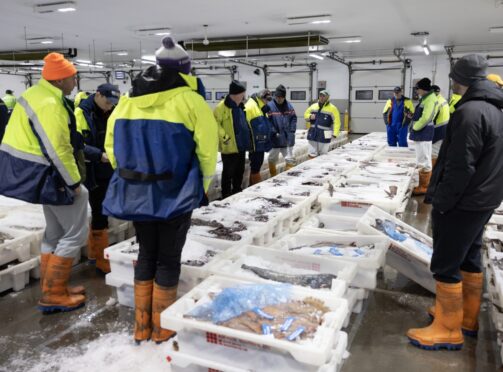A “significant proportion” of the Scottish business community has either applied for or intends to apply for at least one of the UK Government’s five key support schemes, a major new survey has found.
The “unparalleled” level of government support for businesses will be widely-used, according to one of the biggest studies of Scottish companies since the start of the global health emergency.
The Addleshaw Goddard Scottish Business Monitor, produced in a partnership between Strathclyde University’s Fraser of Allander Institute (FAI) and international law firm Addleshaw Goddard, also revealed the response from the government to provide significant aid to the business community and its employees has “in the main” been deemed to be effective, although concern was expressed about the delivery of the various schemes.
Nearly 500 Scottish-based businesses took part in the study over one week earlier this month.
By far the most popular support mechanism for businesses was the Job Retention Scheme (JRS), with nearly 90% of businesses either already using it or planning to do so.
The £25,000 grants available for hospitality, leisure or retail properties with a rateable value of £18,000 to £51,000 was the second most popular.
Of those firms planning to use the various government support schemes, 90% expected them to be either “very effective” or “effective” to the survival of their business.
For those which intended to use the JRS, the vast majority planned to furlough more than half of their staff. More than three-quarters intended to furlough nearly 60% of their employees.
The JRS was perceived to be the most effective scheme to aid a business’s survival, with 95% of respondents saying it would be “effective” or “very effective”.
When asked how easy it had been to obtain government support, most respondents deemed the schemes difficult to access (nearly 60% for the Coronavirus Business Interruption Loan Scheme and more than 40% for the JRS).
Pick-up is expected to increase over the coming weeks and months as the various schemes and their access arrangements become more refined.
FAI director Graeme Roy said: “Our survey finds that businesses are supportive – in principle – of many of the measures announced.
“In particular, accommodation and food services and the construction industry have indicated that the Job Retention Scheme will be key to them surviving to the other side of this crisis.
“However, time will tell how easy these schemes are to access, who is falling through the cracks and the degree to which they are sufficient to help businesses through this unprecedented time.
“Going forward, it will be important to monitor how these schemes operate in practice.
“Businesses too will also want a roadmap out of this crisis period, which will include the timing of these policy measures being unwound and future guidance on social distancing and re-starting the economy.”
David Hughes, a partner in Addleshaw Goddard’s Scottish employment team, said: “The government’s Job Retention Scheme was an important and swift step to avert the potential for mass redundancies.
“As a short term measure, the scheme has certainly been popular and will have provided many businesses with critical breathing space – particularly in the run-up to the April pay run.
“But with half of all employers taking advantage or about to, many will be hoping the social distancing restrictions can be lifted before the Treasury runs out of money to fund it.
“There is, of course, no sign when that will be, and conversations we are having with businesses are increasingly turning to longer-term options and what happens post furlough.”
Gaenor Cassell, a partner in Addleshaw Goddard’s Scottish corporate lending and borrowing team, added: “As the response to Covid-19 continues to develop day-by-day, there remain some issues to be worked through in relation to how some of the emergency funding schemes can be accessed, how they will operate in practice and how quickly funds can be made available.
“Against the backdrop of significant challenges, the British Business Bank and the accredited scheme lenders have reacted quickly to try and deal with these issues.
“It is clear, however, that businesses continue to be in desperate need of cash, and there is an undeniable link between the success of the emergency funding measures and the ability of businesses to recover from the impact of the lockdown restrictions once they are lifted.
“It is, therefore, vital that where obstacles to accessing emergency funding remain, changes are quickly made to allow these to be overcome.”










